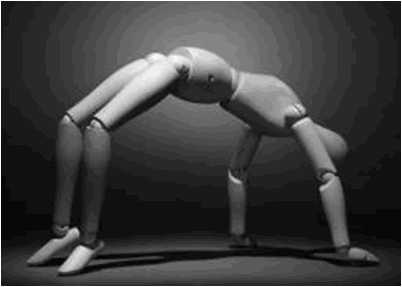
| |
| RQ Network Home |
| RQ Dimensions |
|
|
|
|
|
|
|
|
|
|
|
|
|
|
|
|
| RQ Resources |
| RQ Normative Data |
| RQ Network Forum |
| Russell Consulting, Inc. |
| Contact |
|
The RQ Network is an affiliate organization of Russell Consulting, Inc. For consulting and training resources on leadership, strategy, change, and resilience, contact RCI at: www.RussellConsultingInc.com |
| Flexible Approach |
|
What is Flexible as a Component
of Resilience? The most resilient people are those who are keenly aware of and sensitive to the changes occurring in the world around them. With the help of this awareness, they are then able to shift gears and direction if necessary to accommodate the new reality while remaining true to their life purpose/vision. Resilient people adapt to the environment as both a survival mechanism but also as a vehicle for enabling them to continue the pursuit of their personal goals – which includes learning and personal and professional growth. Flexibility and adaptability are evident in someone when they are able to quickly and easily change gears or direction in the face of changing circumstances. People who lack this characteristic may be either incapable of recognizing the need for changing their behaviors or approach or of not having the capacity for bending or flexing in a new direction when necessary. Being adaptable does not mean, however, that the resilient person has no stable center or core sense of self. While resilient people are able to easily “go with the flow” and “roll with the punches,” they are still carried forward by an enduring personal vision. While they stay true to themselves, they are open as to how they make the journey of their life. Why is Flexible Important to Resilience? Flexibility and adaptability enable a person to accommodate the emerging challenges of everyday life. Whereas those who adhere fanatically to only one way of engaging the world experience unending stress as they find that their personal behaviors and strategies are continually proven to be inadequate in response to life’s challenges, resilient people are more able to adjust for and accommodate each day’s realities. When something doesn’t go as planned for a resilient person he or she is not set back by the turn of events but is able to swiftly and adeptly accommodate the new reality. Rather than hanging on to their anger about the surprising turn of events, resilient people accept things as they are (vs. what they’d like them to be) and then seek a way to make the best of the new situation. This typically involves the resilient person identifying and pursuing what he or she values most in a given situation and then actively pursuing what is most important to him or her by flexibly adopting behaviors and actions that move him or her toward the goal. Without flexibility and adaptability a person is unable to learn or grow, tends to miss new and emerging opportunities, and becomes less effective in dealing with life’s challenges. With flexibility and adaptability a person remains open and receptive to whatever life throws at his or her feet. Flexible Quotes
Strategies for Developing the Flexible Dimension Because of its very nature, flexibility and adaptability
require an individual to be first aware of the
need to be flexible in a given situation, second it
requires being open to the possibilities and opportunities
of changing a behavior or belief, and then third it
requires having the capacity of actually
modifying this behavior or belief. As a result, helping
others develop their adaptability might involve strategies
to engage any and all three of these aspects of
flexibility and adaptability. On a personal, one-on-one basis . . .
Either on a one-on-one basis or when facilitating a group discussion . . .
PDF Edition of this Page on Flexible Click here for a PDF version of this page: Flexible Dimension PDF.
|
